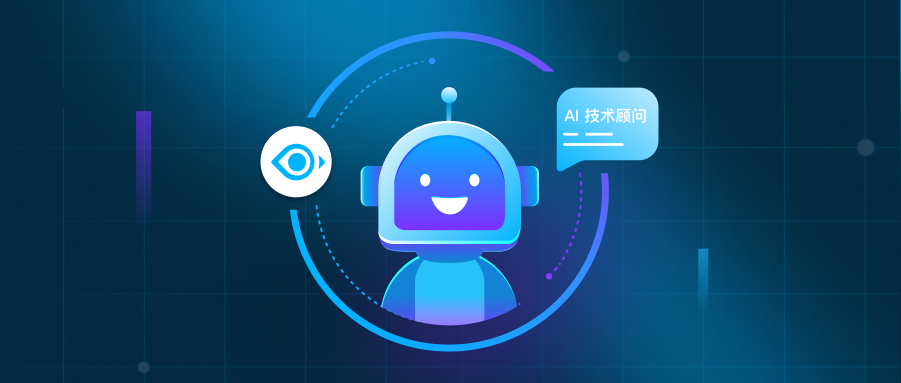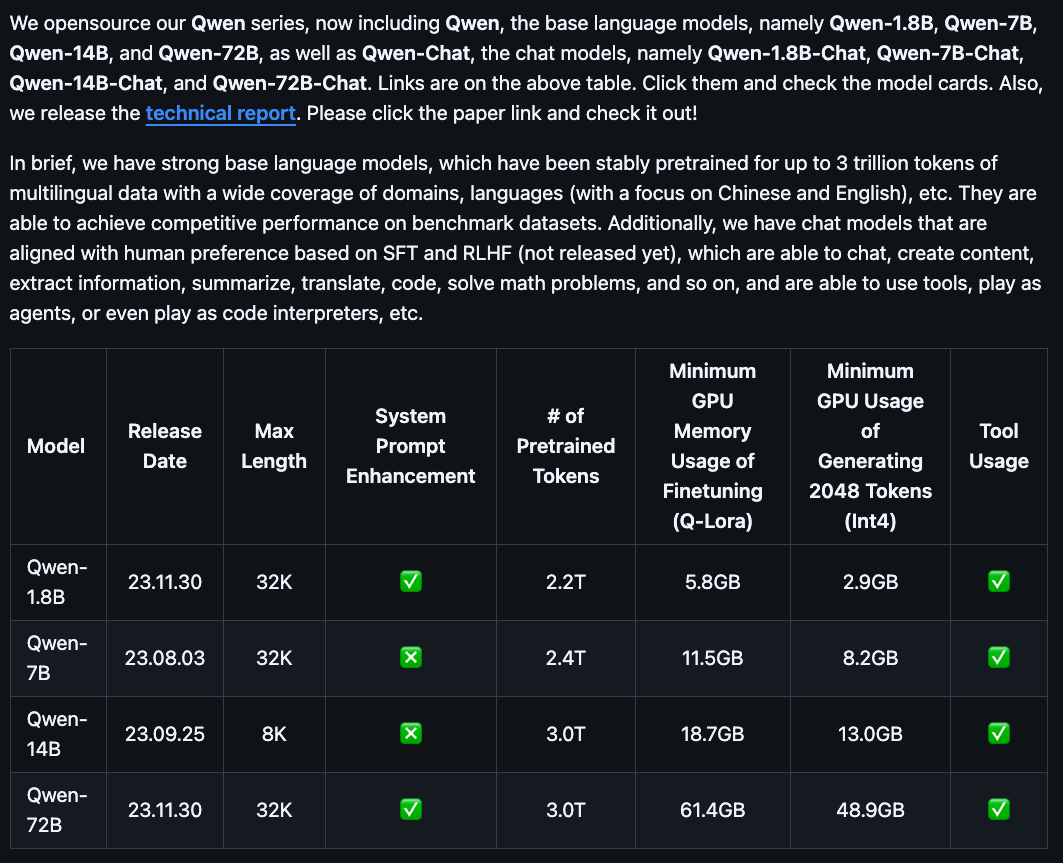一、前言
对于 Milvus 的开发者和使用者来说,向量数据库的应用场景越来越广泛,但技术深度和问题复杂性也与日俱增。在构建 AI 应用、机器学习项目时,我们常常面临这样的困境:明明知道解决方案就在某处,却苦于找不到精准的技术指导。每一个 Milvus 开发者都渴望拥有一个随身的技术顾问,能即时解答向量检索、数据索引、性能优化等关键问题。想象一个完全理解你项目上下文、能秒级响应的专属 AI 助手 - 它可以帮助你节省大量技术排查时间,快速解决各种问题。通过构建属于自己的本地技术顾问,让你在使用和开发 Milvus 的路上更顺利。
二、手把手构建专属 Milvus 技术顾问
本环节中将详细介绍如何结合 Milvus 的数据集和 Qwen 本地大模型,构建一个能够理解和回答特定技术问题的 AI 技术顾问。我们将从零开始,逐步引导完成整个流程,涵盖准备训练数据集、实施微调训练以及评估模型效果等关键环节。通过本实操环节,相信即便是初学者也能成功打造出自己的专属技术顾问,进而显著提高在 Milvus 项目中的工作效率和创新能力。
说明:本文中忽略一些基础环境配置环节,若需了解请自行研究
2.1 环境要求
2.2 环境准备
检查显卡状态
[root@Qwen-main] nvidia-smi
复制代码
新建 Py 虚拟环境并激活
[root@Qwen-main] conda create -n qwen
复制代码
[root@Qwen-main] conda activate qwen
复制代码
数据集准备
https://milvus.io/docs/schema.md
本次数据集采用 Milvus 官方部分文档作为原始数据,保存后等待数据清洗与预处理
Clone 项目到本地
注意:QWEN 项目支持本地运行的模型列表如下,QWEN2 的模型不支持此项目运行
https://github.com/QwenLM/Qwen
(qwen) [root@Qwen-main] git Clone https://github.com/QwenLM/Qwen
复制代码
下载 Qwen-1.8B 模型
(qwen) [root@Qwen-main] modelscope download --model Qwen/Qwen-1_8B-Chat
复制代码
说明:本地模型存储路径
(qwen) [root@Qwen-main] ls /root/.cache/modelscope/hub/Qwen/Qwen-1_8B-Chat/
复制代码
2.3 开始微调训练
2.3.1 安装 Pytorch
注意:请参照 Pytorch 官方环境版本要求选择安装
(qwen) [root@Qwen-main] pip3 install torch torchvision torchaudio -i https://mirrors.aliyun.com/pypi/simple/
复制代码
安装 QWEN 项目所需依赖
(qwen) [root@Qwen-main] pip3 install peft -i https://mirrors.aliyun.com/pypi/simple/
复制代码
(qwen) [root@Qwen-main] pip3 install requirements_web_demo.txt -i https://mirrors.aliyun.com/pypi/simple/
复制代码
(qwen) [root@Qwen-main] pip3 install requirements.txt -i https://mirrors.aliyun.com/pypi/simple/
复制代码
transformers>=4.32.0,<4.38.0acceleratetiktokeneinopstransformers_stream_generator==0.0.4scipy
复制代码
2.3.2 启动 QWEN-1.8B 原始模型
(qwen) [root@Qwen-main] python3 web_demo.py --server-name 0.0.0.0 -c /root/.cache/modelscope/hub/Qwen/Qwen-1_8B-Chat
复制代码
向模型提问测试
说明:此时我们看到微调训练前的 QWEN-1.8 模型回答的结果并没有达到预期,希望回答的是 Milvus 的问题而不是 MongoDB 的问题
2.3.3 数据集预处理
说明:此步骤是将事先准备好的 Milvus 的原始数据集以脚本的方式进行 JSON 格式转换,处理为大模型可识别的格式。
格式转换的原因是 QWEN 是对话型的模型,它需要理解上下文,给定 JSON 格式可以更好的表示。
import jsonimport osimport argparsefrom typing import List, Dict
def convert_milvus_doc_to_conversation(doc_data: Dict) -> List[Dict]: """将Milvus文档转换为对话训练格式""" conversations = []
# 遍历所有 sections for section in doc_data.get('sections', []): # 使用 section 标题作为基础问题 base_question = f"请详细解释Milvus文档中的 {section.get('title', '未知主题')}"
# 从内容中提取关键信息作为答案 content_texts = [] for content in section.get('content', []): # 处理不同类型的内容 if content.get('type') == 'paragraph': content_texts.append(content.get('text', '')) elif content.get('type') == 'code': content_texts.append(content.get('text', '')) elif content.get('type') == 'list': # 处理列表类型的内容 list_items = content.get('items', []) content_texts.extend(list_items)
# 过滤空内容 content_texts = [text for text in content_texts if text.strip()]
answer = ' '.join(content_texts)[:1000] # 限制长度
if answer: conversation_item = { "id": f"milvus_doc_{section.get('title', 'unknown')}", "conversations": [ {"from": "user", "value": base_question}, {"from": "assistant", "value": answer} ] } conversations.append(conversation_item)
print(f"Converted {len(conversations)} conversations") return conversations
def convert_milvus_dataset(input_file: str, output_file: str) -> None: """转换Milvus文档数据集""" all_conversations = []
with open(input_file, 'r', encoding='utf-8') as f: doc_data = json.load(f)
# 如果是列表,逐个处理 if isinstance(doc_data, list): for item in doc_data: converted_docs = convert_milvus_doc_to_conversation(item) all_conversations.extend(converted_docs) else: converted_docs = convert_milvus_doc_to_conversation(doc_data) all_conversations.extend(converted_docs)
# 确保输出目录存在(使用绝对路径) output_dir = os.path.abspath(os.path.dirname(output_file)) os.makedirs(output_dir, exist_ok=True)
# 保存转换后的数据 with open(output_file, 'w', encoding='utf-8') as f: json.dump(all_conversations, f, ensure_ascii=False, indent=2)
print(f"数据转换完成!共转换 {len(all_conversations)} 条对话") print(f"转换后的数据已保存到: {output_file}")
def main(): parser = argparse.ArgumentParser(description='转换Milvus文档数据集') parser.add_argument('--input_file', type=str, required=True, help='输入文件路径') parser.add_argument('--output_file', type=str, required=True, help='输出文件路径')
args = parser.parse_args()
convert_milvus_dataset(args.input_file, args.output_file)
if __name__ == "__main__": main()
复制代码
2.3.4 使用 Lora 进行微调训练
(qwen) [root@Qwen-main] bash finetune/finetune_lora_single_gpu.sh
复制代码
重要参数说明:
# 模型和数据路径配置--model_name_or_path $MODEL # 基础预训练模型路径,影响初始模型权重--data_path $DATA # 训练数据集路径,直接决定训练内容
# 训练轮次和批次设置--num_train_epochs 1 # 训练轮次,影响模型学习深度--per_device_train_batch_size 16 # 每个设备的批次大小,影响梯度计算和显存占用--gradient_accumulation_steps 1 # 梯度累积步数,可以模拟更大的批次大小
# 学习率和优化策略--learning_rate 2e-3 # 学习率,控制模型权重更新速度--weight_decay 0.005 # 权重衰减,防止过拟合--warmup_ratio 0.01 # 学习率预热比例,缓解初期训练不稳定--lr_scheduler_type "constant" # 学习率调度策略
# 模型训练限制--model_max_length 128 # 输入序列最大长度--max_steps 2000 # 总训练步数
# 性能和显存优化--gradient_checkpointing True # 梯度检查点,减少显存占用--lazy_preprocess True # 延迟预处理,提高数据加载效率
# LoRA 特定配置--use_lora # 启用 LoRA 微调
复制代码
查看微调训练后的模型
2.3.5 合并模型
说明:合并模型的意思,就是将在特定领域(如 Milvus)数据集上微调的模型权重,永久地集成到原始预训练模型中,生成一个具有领域专属知识和能力的定制模型。
[root@Qwen-main] python3 merge_lora.py
复制代码
import osfrom peft import AutoPeftModelForCausalLMfrom transformers import AutoTokenizer, GenerationConfigimport torch
def merge_lora( lora_model_path="/root/qwen-wt/Qwen-main/output_qwen/checkpoint-2000", base_model_path="/root/.cache/modelscope/hub/Qwen/Qwen-1_8B-Chat", save_path="/root/qwen-wt/Qwen-main/Milvus-model"): print("Starting model merge...")
# 加载 LoRA 模型 print(f"Loading LoRA model from {lora_model_path}") model = AutoPeftModelForCausalLM.from_pretrained( lora_model_path, device_map="auto", torch_dtype=torch.float16 )
# 合并模型 print("Merging models...") merged_model = model.merge_and_unload()
# 保存合并后的模型 print(f"Saving merged model to {save_path}") os.makedirs(save_path, exist_ok=True) merged_model.save_pretrained(save_path)
# 保存tokenizer和generation_config print("Saving tokenizer and configs...") tokenizer = AutoTokenizer.from_pretrained( base_model_path, trust_remote_code=True ) tokenizer.save_pretrained(save_path)
# 复制 generation_config.json generation_config = GenerationConfig.from_pretrained( base_model_path, trust_remote_code=True ) generation_config.save_pretrained(save_path)
print(f"Merge completed! Merged model saved to: {save_path}") print("\nYou can now use the merged model with web demo:") print(f"python web_demo.py --server-name 0.0.0.0 -c {save_path}")
if __name__ == "__main__": merge_lora()
复制代码
2.3.6 启动新模型并访问测试
说明:此时我们再次向模型提出和刚才一样的问题,得到的结果是符合预期的。
[root@Qwen-main] python web_demo.py --server-name 0.0.0.0 -c /root/qwen-wt/Qwen-main/Milvus-model
复制代码
三、总结:大模型微调训练那些事
本次微调训练只是一个起点。对于想要构建专属技术顾问的开发者或用户来说,我们还需要在数据质量、模型选择和训练策略上下更多功夫。想要微调出效果更好的模型推荐从两个方向继续深化:一是优化训练数据集,确保覆盖更多技术场景;二是尝试更精细的指令微调,提高模型在特定领域的专业性。技术的进步从来都是在不断迭代中实现的。
完整代码:
链接: https://pan.baidu.com/s/1bqWcIYBw2sUy36t9ol17Ww?pwd=1234 提取码: 1234
作者介绍
Zilliz 黄金写手:尹珉


























评论